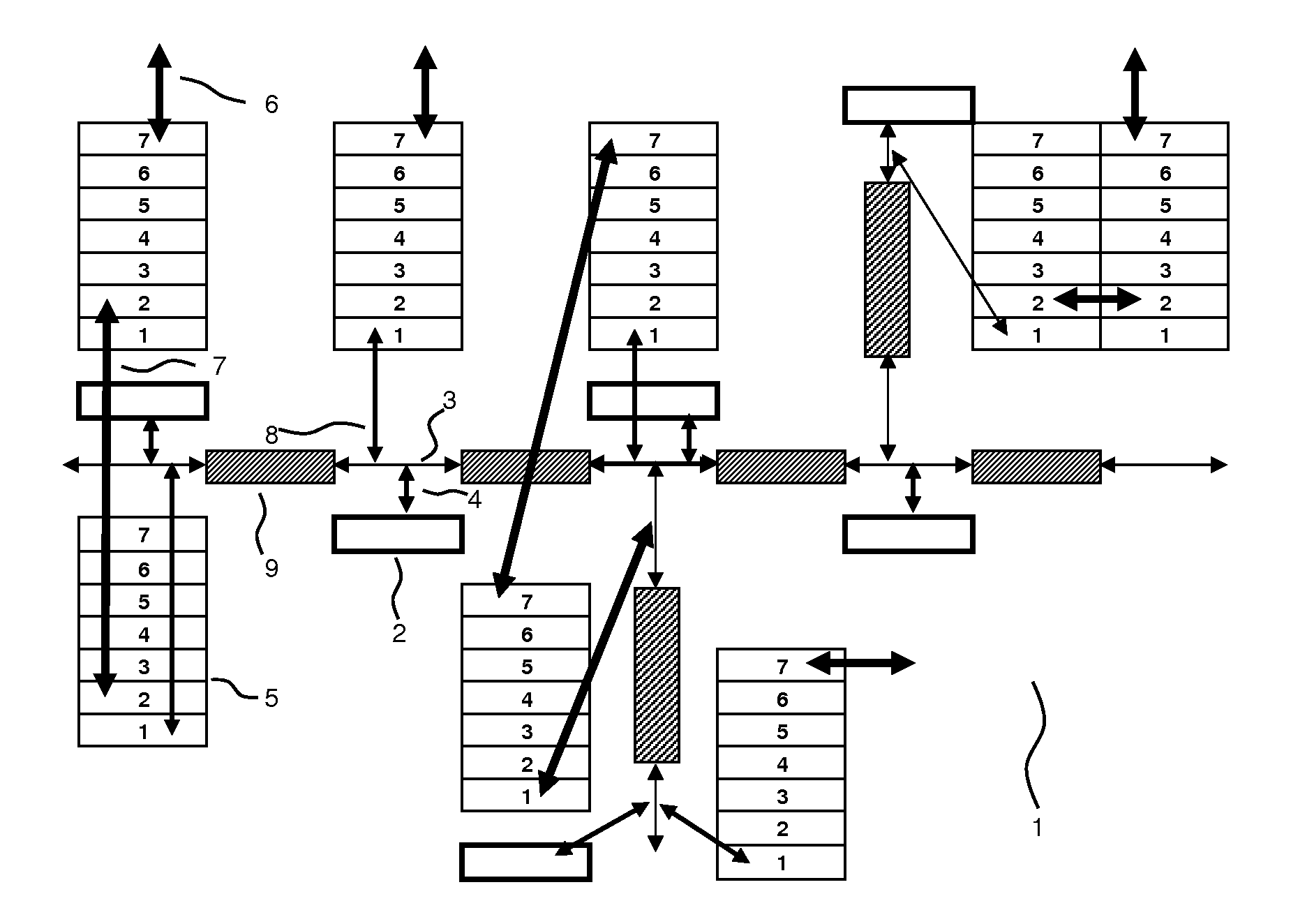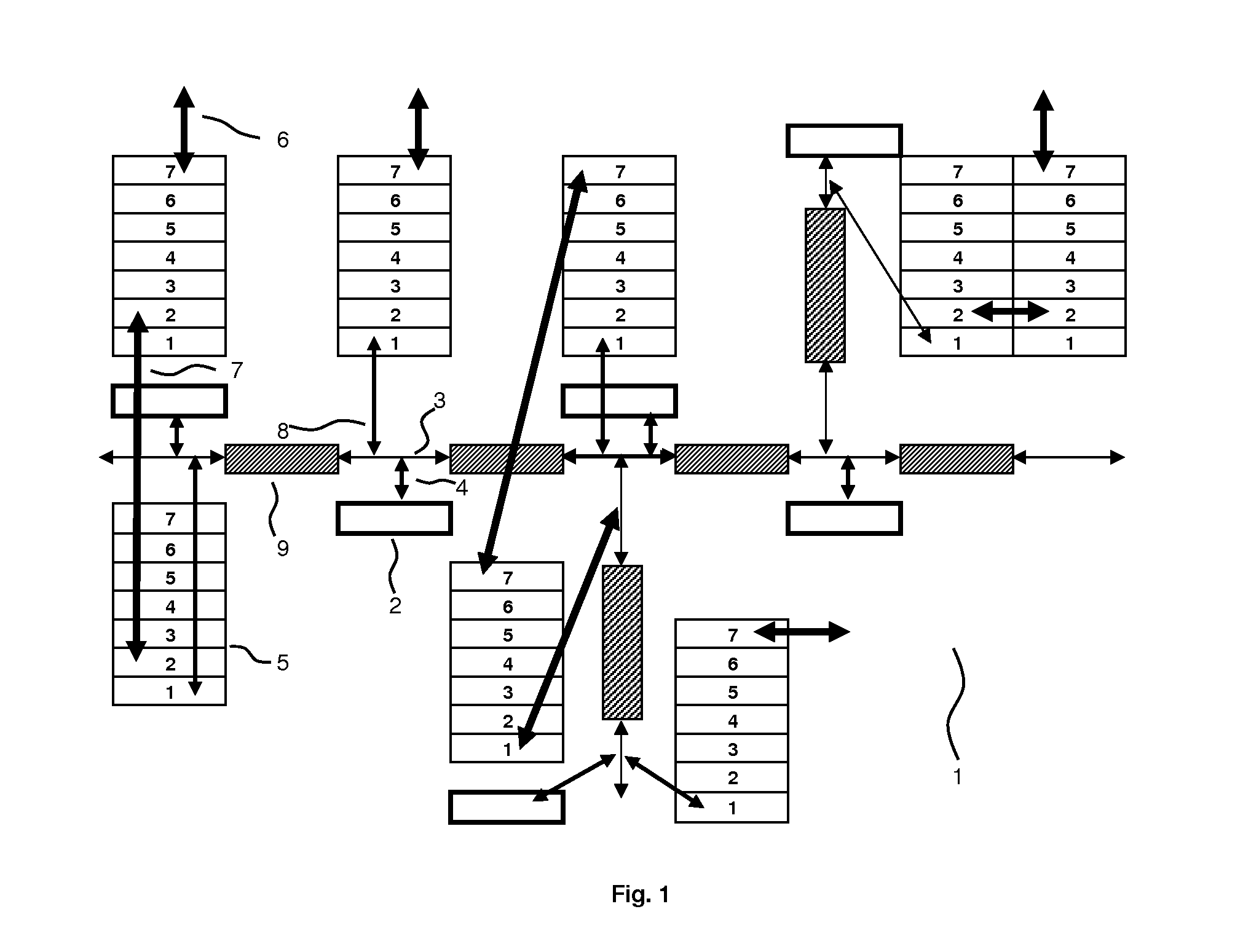[0022]The invention applies a
synergy at the lowest
layers of standardized communication systems as with
Docsis and DVBc by using
repeater based systems in power grids and thus avoiding packet losses and thus giving commercial quality for demanding services like
IPTV with MPEG4. More precisely this concerns in particular link and
physical layer of the
OSI model. The repeater based
system of the invention provides the
carrier to noise ratio to stay nearly unchanged regardless of distance from Headend or from node points where the Headend signals are distributed. The invention can utilize that it is optional whether interconnections are made to the
link layer or the
physical layer. Further the invention can utilize the possibility to choose
interconnection at
link layer or
physical layer at the different repeater positions. The repeater based system irrespective of said
synergy thereby ensures a quality for service streams which is nearly identical to
coaxial cable within a given frequency region. With the invention BER will only be acceptably higher despite different dispersion characteristics and variations in
signal medium. The invention therefore facilitates through no or minor modifications of standardized equipment fully acceptable services, even the most demanding ones.
[0023]The invention involves novel solutions to offer required, efficient, industrial deployment to compete against more expensive, technology solutions.
[0024]The invention assures that input and output
coupling which potentially is destructive for stability,
connectivity and for
Quality of Service can be done industrially, as do it yourself packages or as combinations thereof.
[0022]The invention applies a
synergy at the lowest
layers of standardized communication systems as with
Docsis and DVBc by using repeater based systems in power grids and thus avoiding packet losses and thus giving commercial quality for demanding services like
IPTV with MPEG4. More precisely this concerns in particular link and physical layer of the
OSI model. The repeater based system of the invention provides the
carrier to noise ratio to stay nearly unchanged regardless of distance from Headend or from node points where the Headend signals are distributed. The invention can utilize that it is optional whether interconnections are made to the
link layer or the physical layer. Further the invention can utilize the possibility to choose
interconnection at link layer or physical layer at the different repeater positions. The repeater based system irrespective of said synergy thereby ensures a quality for service streams which is nearly identical to
coaxial cable within a given frequency region. With the invention BER will only be acceptably higher despite different dispersion characteristics and variations in
signal medium. The invention therefore facilitates through no or minor modifications of standardized equipment fully acceptable services, even the most demanding ones.
[0022]The invention applies a synergy at the lowest layers of standardized communication systems as with Docsis and DVBc by using repeater based systems in power grids and thus avoiding packet losses and thus giving commercial quality for demanding services like
IPTV with MPEG4. More precisely this concerns in particular link and physical layer of the
OSI model. The repeater based system of the invention provides the
carrier to noise ratio to stay nearly unchanged regardless of distance from Headend or from node points where the Headend signals are distributed. The invention can utilize that it is optional whether interconnections are made to the link layer or the physical layer. Further the invention can utilize the possibility to choose
interconnection at link layer or physical layer at the different repeater positions. The repeater based system irrespective of said synergy thereby ensures a quality for service streams which is nearly identical to
coaxial cable within a given frequency region. With the invention BER will only be acceptably higher despite different dispersion characteristics and variations in signal medium. The invention therefore facilitates through no or minor modifications of standardized equipment fully acceptable services, even the most demanding ones.
 Login to View More
Login to View More  Login to View More
Login to View More 

